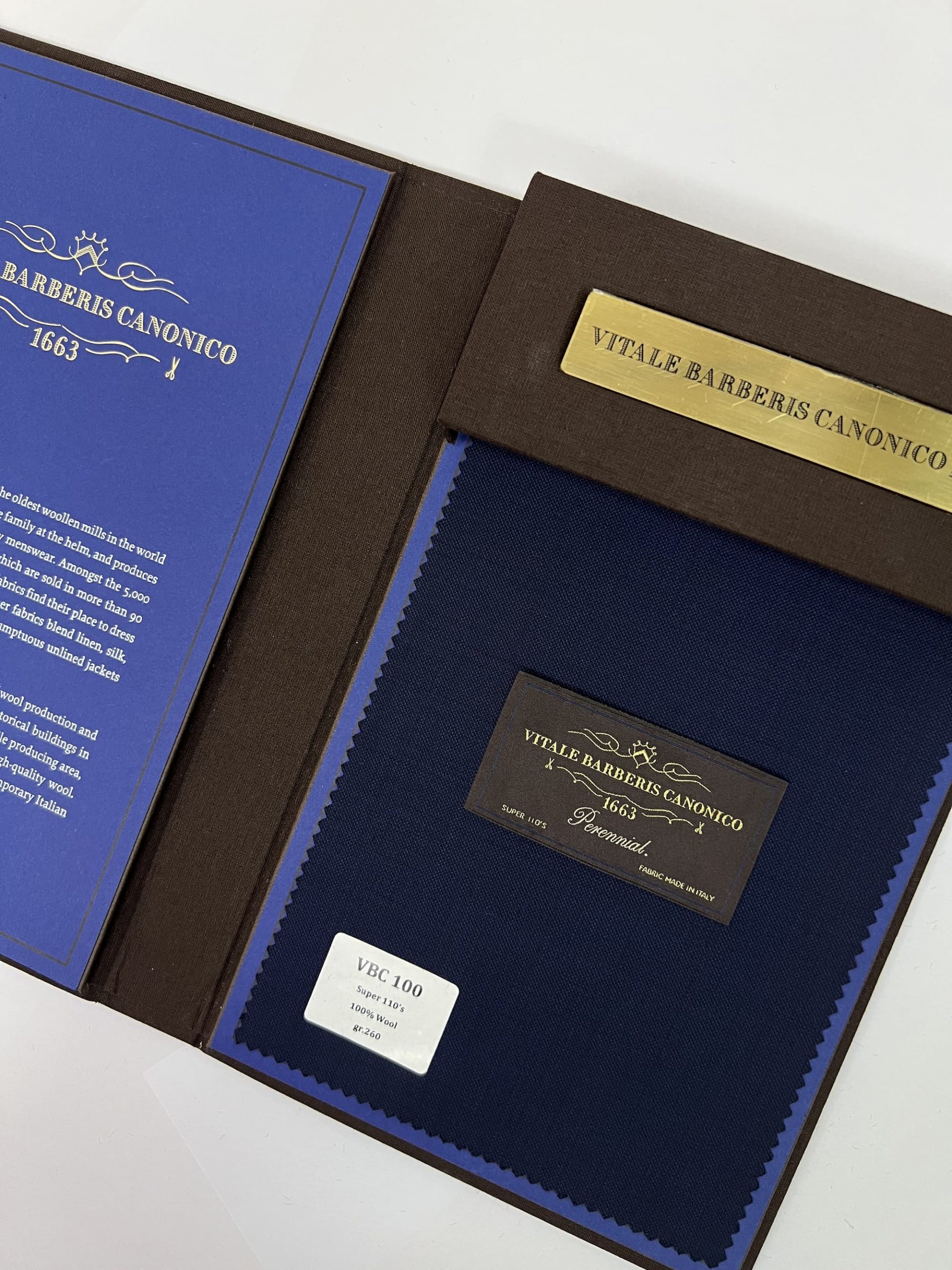Your Next Three-Piece Suit: Super 100 Cloths Explained
Posted by S. Bookster on 22nd Apr 2025
Spring is often the time when many gentlemen look to refresh their wardrobe in time for the summer season with the help of a bespoke online tailor.
In some cases it might be hunting jackets in time for the new shooting season, in other cases it is a matter of maintaining an array of suitable suits for the summer season.
When looking for inspiration for your next three-piece suit, either through looking at current fashions or ordering a few samples, one term that might catch your eye is Super 100s.
Whilst a striking term in itself, a superwool or Super 100s cloth is an important technical term that describes how luxuriously soft it both looks and feels.
What Is A Superwool?
A super number is a grading system used to quantify the fineness and quality of wool, with different wool grades utilised by tailors for different types of suits.
As a categorisation system, it is actually made up of two separate grading systems; the ‘super’ part is used to describe the finest quality woollen fibres, with fine, medium and low being the other three categories.
This early labelling system was criticised for being far too subjective, so it was combined with a more objective scale. The Super number is calculated by the number of wool hanks that can be spun into a single pound of wool.
For example, Super 100s would be fine enough to spin into 100 hanks per pound, which translates to a thickness of 18.5 microns. Super wool grades vary from 70 to 200, with higher numbers having thinner fibres.
It is a measure of wool fineness, not the weight of a fabric, as the latter is determined by how it is woven.
Is A Higher Grade Always Best?
There is a tradeoff when it comes to superwool grades; we often recommend Super 100s wool because it is the perfect balance between durability and softness, with the result being a luxurious suit you could put in your everyday rotation.
Without wanting to confuse you, it is also worth noting that there are wool cloth blends available that contain a proportion, such as 70 per cent superfine wool, so there’s even more choice out there.
Lower grades than that tend to work best for overcoats and robust hunting suits that may be expected to withstand some rough treatment, whilst higher grades tend to be far more delicate.
Whilst wool grades theoretically reach up to 200, not only is wool that soft often extremely expensive owing to its rarity, it requires a dedicated care routine to ensure it does not tear through everyday use. Pressure points such as the elbows and knees are particularly prone to wear.

When Should You Wear A Super 100s Suit?
A Super 100s suit is the ultimate multipurpose garment, as it is luxurious enough for formal settings, but also hard-wearing and long lasting enough for everyday business use.
Is There A Difference Between Super 100s And 100 Per Cent Wool?
Whilst the two classifications are similar enough to cause confusion, they are used to measure completely different aspects of a garment.
A 100 per cent wool suit simply means that it is not blended or mixed with other fibres, whilst Super 100s is more focused on the fineness and the resulting softness of the fabric itself.
 British Pounds
British Pounds
 US Dollar
US Dollar

